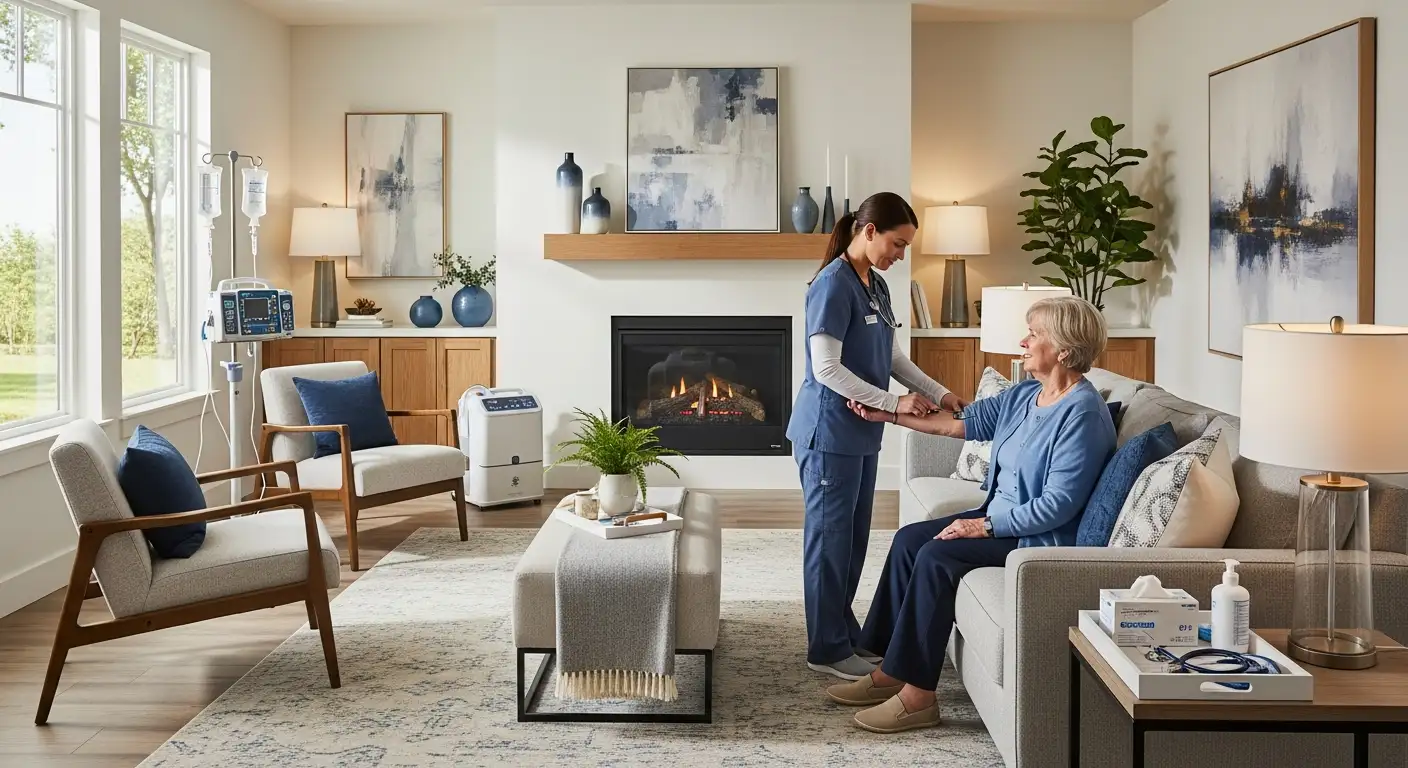Benefits of Pets for the Elderly
Having pets can bring numerous benefits to the lives of elderly individuals. Not only do pets offer companionship and unconditional love, but they can also have a positive impact on cognitive and mental well-being.

Cognitive and Behavioral Improvements
Studies have shown that the presence of animals can alleviate manifestations of cognitive disorders, such as agitation, in the elderly. Several small investigations have demonstrated improvements in behavior in individuals with dementia when they receive treatment in the presence of animals.
Interacting with pets can stimulate cognitive functions, including memory and attention, helping to keep the mind active.
Moreover, caring for a pet requires routine tasks and responsibilities, which can provide mental stimulation and a sense of purpose for older individuals. Having set times for feeding, playing, exercising, and grooming a pet can establish structured routines, promoting cognitive engagement and providing a sense of accomplishment.
Mental Health Benefits
Pets offer intangible benefits to the mental health of older adults, such as relief from social isolation and boredom. The companionship provided by pets can help combat feelings of loneliness, providing a constant source of affection and support.
Interacting with pets releases endorphins, which can enhance mood and reduce stress and anxiety levels.
Furthermore, owning a pet can provide a sense of purpose and meaning in life. Taking care of another living being can give individuals a sense of responsibility and fulfillment, boosting their overall well-being and mental health. The unconditional love and companionship offered by pets can provide a source of emotional support, helping to alleviate symptoms of depression and improve overall psychological well-being.
Pets have the ability to transform the lives of the elderly, offering not only emotional support but also cognitive and behavioral improvements. The presence of a pet can bring joy, companionship, and a renewed sense of purpose to the lives of older individuals, contributing to their overall quality of life.
Physical Health Impact
Pets have a significant impact on the physical well-being of elderly individuals. Interacting with pets, especially through activities like walking, can lead to various physical health benefits. This section explores the impact of pets on blood pressure, physical activity, and cardiovascular health.
Blood Pressure and Physical Activity
Research has shown that animal companionship can contribute to lower blood pressure in individuals, including the elderly. Dog owners, in particular, have been found to have lower blood pressure compared to non-owners. In addition, dog owners are more likely to engage in physical activity, such as walking, compared to individuals who do not own dogs. Dog walking has also been associated with higher levels of physical activity in elderly individuals.
Walking a dog provides an incentive for older adults to engage in regular exercise, leading to improved physical health. Even a low-intensity daily walk can contribute to heart health, lower blood pressure, and reduced stress levels. By incorporating pet ownership into their routine, elderly individuals can achieve the recommended 150 minutes of exercise per week, as suggested by the CDC.
Cardiovascular Health
The benefits of pet ownership extend to cardiovascular health as well. Dog owners have been found to have healthier cholesterol levels and a lower risk of heart disease compared to non-owners. Engaging in regular physical activity, such as walking a dog, can help maintain a healthy body mass index, reduce limitations in daily activities, and increase the frequency of moderate and vigorous exercise.
In elderly individuals, pet ownership has been associated with reduced systolic mean arteriolar and pulse pressure, as well as a lower risk of hypertension. These factors contribute to better overall cardiovascular health. Walking a dog not only benefits the physical health of both the owner and the dog but also promotes social interaction and a sense of community.
By owning a pet and engaging in physical activities like walking, older adults can improve their cardiovascular health, maintain a healthy body weight, and reduce the risk of heart disease. The joy and companionship provided by pets can motivate and encourage seniors to stay active, leading to a more fulfilling and healthier lifestyle.
Considerations for Elderly Pet Ownership
While pets can bring joy and companionship to the lives of the elderly, there are important considerations to keep in mind when it comes to pet ownership in this age group. Two key factors to consider are the cost and fall risk associated with pet ownership, as well as the potential health risks and infections that can arise.
Cost and Fall Risk
Pets can be expensive to care for, and this is an important consideration for elderly individuals on fixed incomes. Costs such as food, veterinary care, grooming, and supplies can add up. It's essential to carefully evaluate the financial implications of pet ownership and ensure that the necessary resources are available to provide proper care for the pet.
Another significant consideration is the risk of falls associated with pet ownership. Lively or tiny pets, such as kittens and puppies, may pose a risk to older adults due to their high energy levels and demand for more physical care. The Centers for Disease Control and Prevention (CDC) reports that over 86,000 individuals visit emergency rooms each year after falling while taking care of a pet, highlighting the importance of considering the pet's energy levels when choosing a pet for an elderly person.
Health Risks and Infections
While pets can provide immense comfort, it's crucial to be aware of the potential health risks and infections associated with pet ownership. Zoonotic infections, which can be transmitted from animals to humans, are a concern. However, the frequency of such events in the context of pet ownership or animal-assisted therapy is not well-documented.
To minimize the risk of infections, it's important to maintain good hygiene practices when interacting with pets. Regular handwashing, especially after handling pets or cleaning their living areas, can help reduce the chances of contracting an infection. It's also advisable to keep pets up to date with vaccinations and seek veterinary care promptly if any health concerns arise.
In addition to considering the potential health risks, it's important to have a support system in place for the care of the pet in case the elderly owner is unable to do so due to hospitalization or other unforeseen circumstances. Having a backup person who can look after the pet can prevent neglect in such cases. It's also advisable to have a written plan for the care of the pet in case the owner becomes unavailable, such as entering a care facility or passing away. This ensures that the animal will be taken care of even if the owner is no longer able to do so.
By considering the cost and fall risk associated with pet ownership, as well as being mindful of potential health risks and infections, elderly individuals can make informed decisions about pet ownership. With proper planning, support, and precautions, the benefits of pet companionship can be enjoyed while ensuring the well-being of both the owner and the pet.
Choosing the Right Pet
When it comes to selecting a pet for the elderly, it's important to consider various factors to ensure a suitable match. Age and size considerations, as well as breed and care requirements, play a significant role in determining the right pet for an elderly individual.
Age and Size Considerations
For seniors, it is generally recommended to adopt middle-aged dogs or larger dogs between 5 and 7 years of age. Puppies are not typically recommended due to their high energy levels and the need for continuous monitoring.
In terms of size, smaller dogs weighing between 8 and 20 pounds when fully grown are often more manageable and easier to handle and walk. These dogs are a popular choice for seniors as they require less physical strength to care for. Adoption of rescue mixes and cross-breeding mixes can also be ideal.
Breed and Care Requirements
When considering dog breeds for the elderly, it's important to select a breed that aligns with their lifestyle and care capabilities. Some breeds, such as poodles, Yorkshire terriers, and "doodles" (mixes of poodles and other breeds), are known for their low shedding and hypoallergenic qualities. These breeds may be suitable for seniors who are allergic to dogs or prefer minimal shedding. However, keep in mind that they may require professional grooming.
For those who prefer a lower-maintenance pet, cats can be an excellent choice. Cats are generally considered low maintenance, affectionate, smart, and independent. They require basic care such as cleaning their litter box and providing food and water.
It's important to consider the care requirements of different animals before making a decision. For elderly individuals with limited mobility or energy, low-maintenance pets like fish or birds may be more suitable. These pets still provide companionship but require less physical interaction and care.
By considering age, size, breed, and care requirements, seniors can select a pet that best suits their lifestyle and capabilities. This ensures a harmonious and fulfilling companionship between the elderly and their chosen pet.
Emotional Support and Social Interaction
Pets can provide valuable emotional support and social interaction, particularly for older adults. For seniors who may experience feelings of loneliness and isolation, having a pet can serve as a constant companion when family members or friends are not around. This can help alleviate these negative emotions and provide a sense of comfort and companionship.
Loneliness and Isolation
According to the Centers for Disease Control and Prevention (CDC), a significant percentage of older adults experience feelings of loneliness and social isolation. Pets, especially cats and dogs, can play a crucial role in combating these emotions. The presence of a pet provides a source of companionship and unconditional love, filling the void that may exist due to limited social interactions with others.
Community Engagement
Being a pet owner, particularly having a dog, can facilitate social interactions and community engagement for older adults. Pets often act as conversation starters, creating opportunities to connect with neighbors and other community members. In fact, a study conducted by Harvard University found that pet owners, especially those with dogs, were 60% more likely to get to know people in their neighborhoods whom they hadn't known before. This increased social interaction can help combat feelings of isolation and create a sense of belonging within the community.
Pets offer companionship, emotional support, and the opportunity for seniors to engage with others, helping to improve their overall well-being. By providing a source of comfort, reducing feelings of loneliness, and facilitating social interactions, pets can have a transformative impact on the lives of older adults.
Pet Care and Well-being
Owning a pet brings not only joy and companionship but also responsibilities. The care and well-being of pets can have a positive impact on the lives of elderly individuals, providing them with physical activity, structure, and purpose. Let's explore two key aspects of pet care and well-being for the elderly: physical activity and health benefits, as well as structured routines and purpose.
Physical Activity and Health Benefits
Caring for a pet can encourage physical activity among older adults. Taking care of a pet often involves activities such as walking, playing, and grooming. For instance, dog owners tend to walk an average of 22 minutes longer than those who do not own dogs, according to Cigna. Even a low-intensity daily 20-minute walk can have significant health benefits, such as improving heart health, lowering blood pressure, and relieving stress.
Engaging in physical activities with pets can also help older adults maintain mobility, improve general health and fitness, increase energy levels, manage arthritis or joint conditions, and build strength and stamina. Additionally, spending time with pets has been found to lower blood pressure and cholesterol levels, reducing the risks of stroke or heart disease.
Structured Routines and Purpose
Caring for a pet can provide a sense of structure and purpose to the lives of elderly individuals. Pets thrive on routine, and pet ownership involves establishing set times for feeding, playing, exercising, and grooming. These activities provide structure to someone's day and can promote physical activity and time spent outdoors.
Having a pet also encourages the development of routines. Older adults often find comfort and meaning in following a daily schedule that revolves around their pet's needs. This sense of purpose can be particularly beneficial for some elderly adults, helping them stay engaged and motivated.
By taking care of a pet, older individuals can experience the satisfaction of meeting their pet's needs and providing a loving and nurturing environment. This responsibility can contribute to a sense of fulfillment and overall well-being.
In conclusion, pet care and well-being go hand in hand for elderly individuals. Engaging in physical activities with pets can lead to improved health, increased physical activity, and reduced stress levels. Establishing structured routines around pet care provides a sense of purpose and fulfillment, enhancing the overall well-being of the elderly.
References
- https://www.ncbi.nlm.nih.gov/pmc/articles/PMC4248608/
- https://taking.care/blogs/resources-advice/benefits-of-pets-for-the-elderly
- https://newsroom.cigna.com/unexpected-health-benefits-of-pets-for-older-americans
- https://www.prestigecare.com/blog/the-mental-health-benefits-of-pets-for-older-adults/
- https://www.forbes.com/health/healthy-aging/best-dogs-for-seniors/
- https://www.discoverycommons.com/senior-living-blog/choosing-the-right-pet-for-your-elderly-loved-one/
- https://www.quora.com/What-is-the-best-pet-for-an-elderly-person



